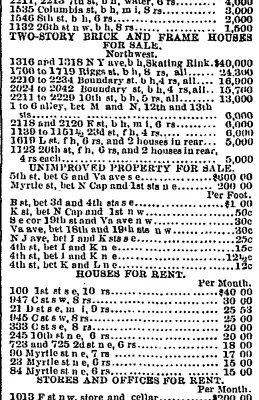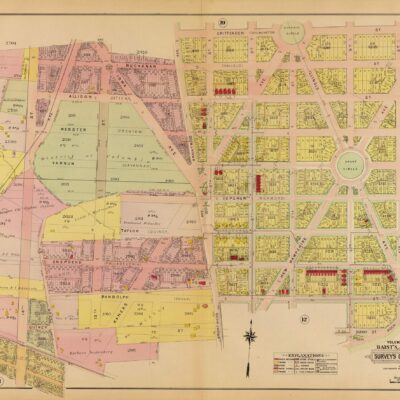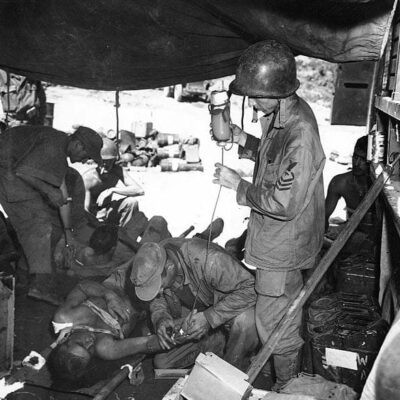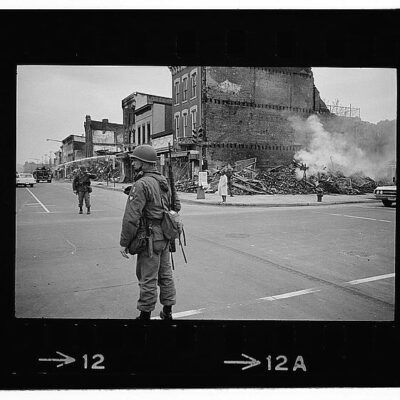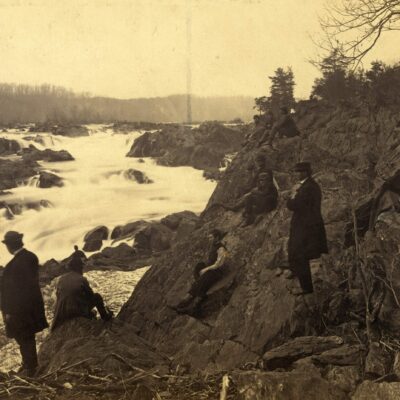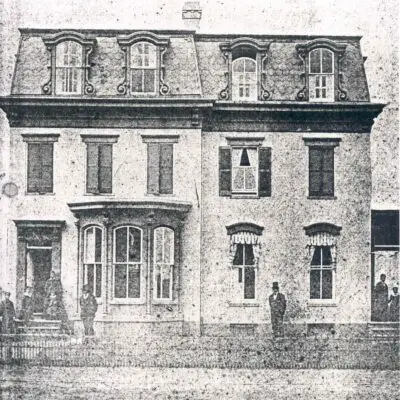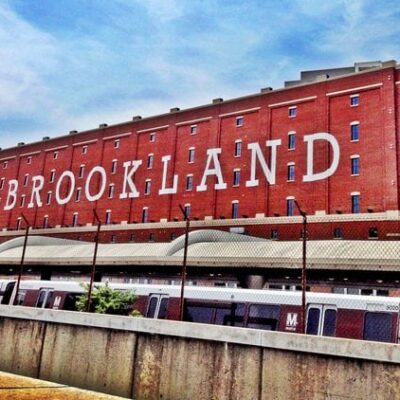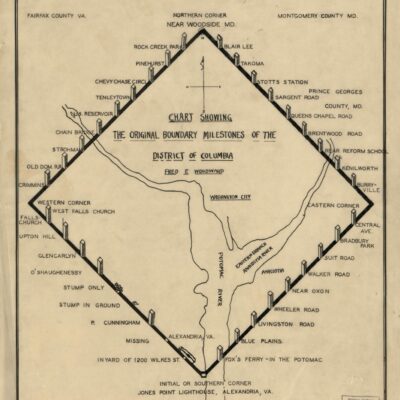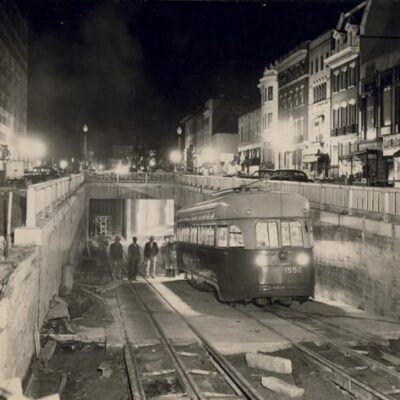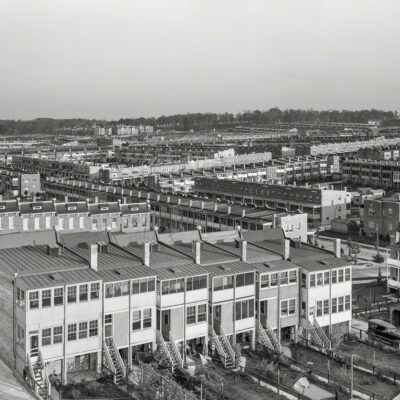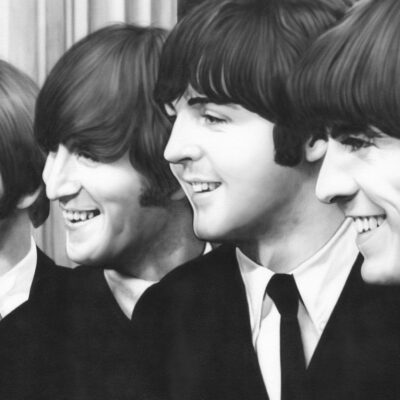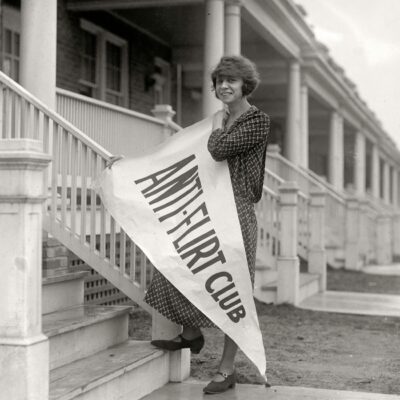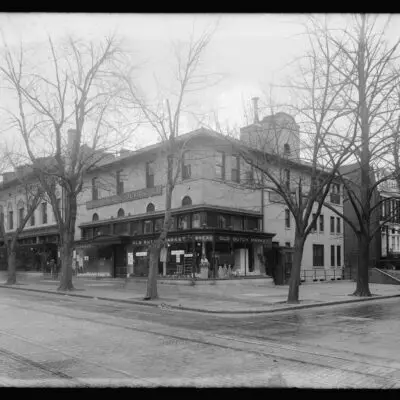The hospital still exists, but it’s no longer in the original location. Providence Hospital once stood between 2nd and 3rd St. and D and E St. Southeast. The block is now Providence Park, which is an awesome place to spend a sunny Saturday afternoon.
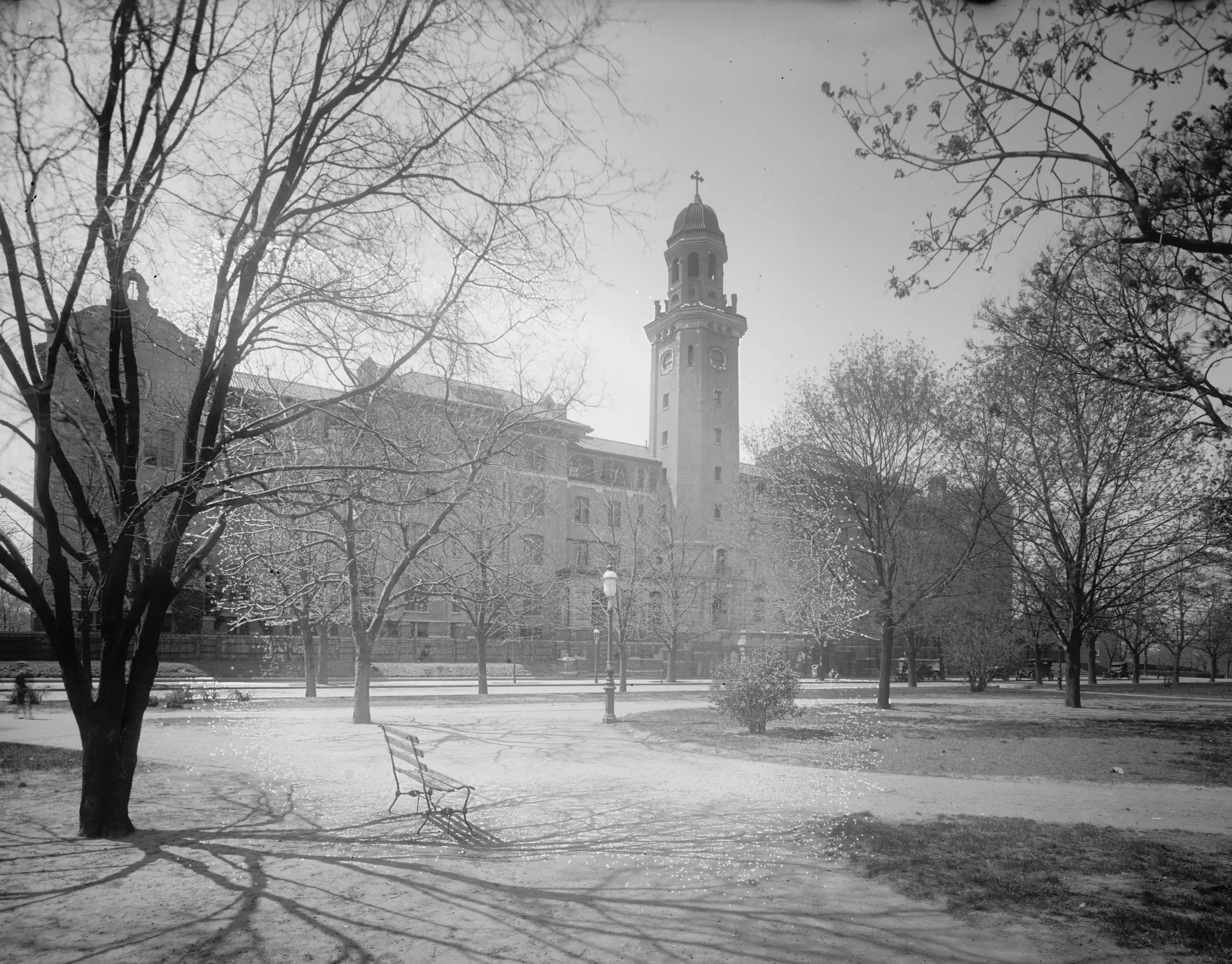
The former hospital used to occupy square 735 and was subdivided into 14 lots (see map below). According to the hospital’s website, it is the longest continuously operating hospital in the city. It was initially established as a teaching hospital during the Civil War.
The hospital expanded in the early 1900s and continued to provide care at the Capitol Hill location until the facilities began to show its age and a new hospital was needed. In the 1950s, discussion began on rebuilding the hospital. At the time, the decision was made to relocate the hospital to its current spot in Northeast D.C.. when engineers noted that rebuilding on the same lot would necessitate a two-year closure of the hospital. Thus, the spot at 1150 Varnum St. NE was selected.
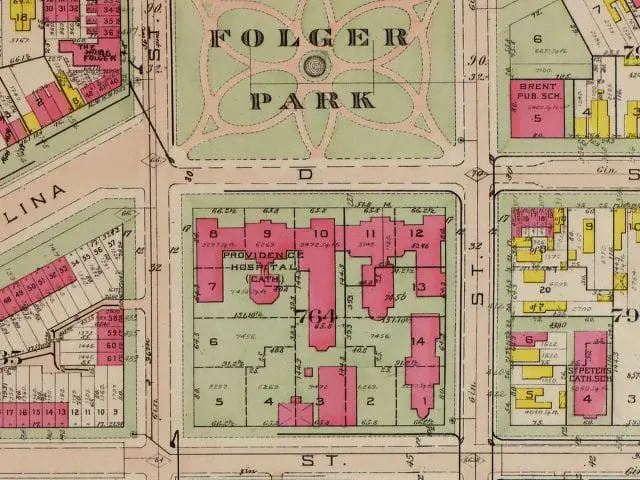
The new hospital was mentioned in the Washington Post on January 6th, 1952, noting that it would cost upwards of $7 million.
Providence Hospital, begun here in 1861 to care for wounded soldiers of the Civil War, is going to build a new seven-million-dollar plant.
For the project, the Washington public will be asked to contribute one million dollars in a fund-raising campaign to begin early next month, officials of the hospital announced last night.
The new Providence Hospital, they said, will be constructed on a 15-acre site at 12th and Varnum sts. ne., near Catholic University.
The hospital moved to its current location in March 1956. Five years later, the old campus remained and on the 100th anniversary, the Baltimore Sun wrote the following article, on June 11th, 1961.
Providence was founded June 10, 1861. the grounds on which it stood for 95 years and where the Library of Congress and the nation’s Capitol still stand, were all originally part of the famed Cerne Abbey Manor tract, acquired in 1730 by a pioneer settler of Maryland, Thomas Notley. It was named for an old Benedictine abbey in Dorsetshire, England.
A portion of the tract descended through the much-intermarried Carroll family of Maryland.
…
A month after admitting its first patient–a typhoid case named Lawrence O’Toole, Providence was receiving casualties from Bull Run.
Hospital records show the admission, on July 22, 1861, of two privates of the 71st New York Volunteers, William Behan and George A. Cooke. Behan was described as suffering from “a wound of thigh.” Both were wounded the day before at Centreville in a skirmish preliminary to the First Manassas.
The old facilities were being leased by the Commerce Department (U.S. Coast and Geodetic Survey) after the hospital left for Northeast. In October 1963, plans were announced to build a massive 10-story apartment building on the site, pending zoning change approvals. Four businessmen has purchased the property in 1962 for over $600,000 from the Sisters of Mercy.
One of the challenges these men were facing was a 1955 law that placed the property within an area of land in which Congress could eminent domain property to expand the Capitol grounds. Well, long story short, this real estate speculation didn’t work out for the investors, as they were unable to get the zoning change. Nevertheless, they paid $55,000 to have the entire complex demolished.
Following the failed attempt at developing apartments, the owners pushed to construct a parking lot on the site. They were unable to generate any revenue with the property and were looking to defray the carrying costs by charging fees on a temporary parking lot. The neighbors rallied against this as well, claiming the increased traffic would destroy the neighborhood.
By the end of the 1960s, the District government had considered the lot for a new junior high school. The Architect of the Capitol also expressed interest in acquiring the site. An article in the Washington Post on February 4th, 1969 stated that the plan was to purchase the lot and build a new headquarters complex for the Capitol Police roce. A total of $1,250,000 was written into their budget for the 1970 fiscal year. This plan also fell through.
For almost a decade, the property was the center of major feuds between neighbors, the investors and members of congress. Finally, there was some movement in June 1972. The Senate Public Works Committee formally rejected any proposals to convert the site to at temporary parking lot. The Committee also voted in favor of federal acquisition of the property as the new location for a school and dormitory for congressional pages.
A total fair market value of $1.4 million was allotted to acquire the land, now a pile of dirt. The proposed school on the site was to be named after recently retired former House Speaker John W. McCormack. Construction plans were set to take four years, and until they began, the site ironically was to service as a free parking lot for Capitol visitors. The neighbors rallied one more time against the parking lot and successfully killed the idea.
The Architect of the Capitol held additional meetings in 1977 with members of the Capitol Hill community to discuss options for the site, in the event that the page school idea failed to be realized. The winning proposal was the build a sizable housing complex for senior citizens. In addition, the community successfully lobbied Congress for $375,000 in funding to turn the ugly, dirt-filled lot into green space, crossed by two concrete paths.
The page school project died due to lack of funding, and the senior citizens project failed to gain enough support.
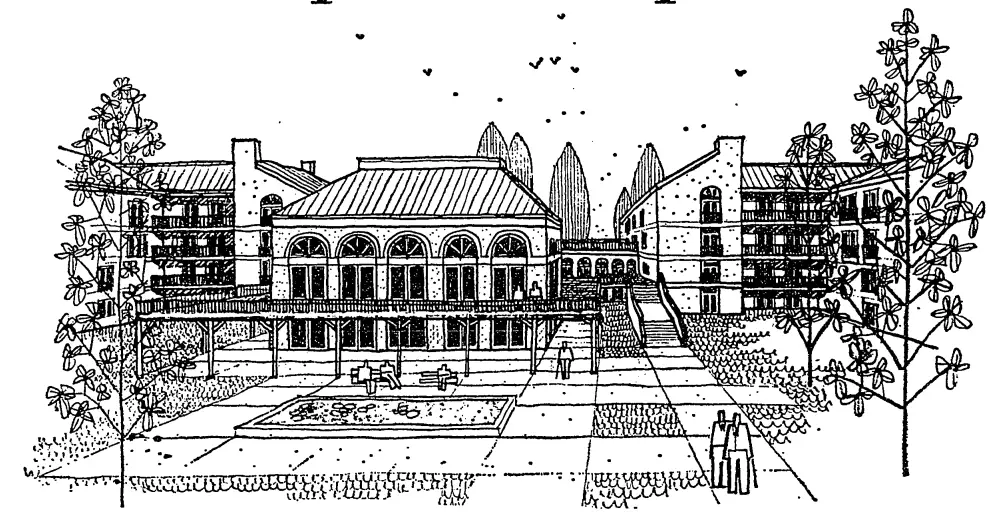
The park was yet again in the middle of real estate controversy in 1990 when the University of California was looking for a location to build a multimillion-dollar education facility. Fortunately, the neighborhood was blessed with luck again and the university selected an alternate site on Rhode Island Ave. NW, near Scott Circle.
What was formerly the site of the oldest hospital in Washington, has successfully fended off numerous proposals to rid the neighborhood of its beautiful park. It remains today as a great, open green space, criss crossed by two concrete paths, with the nickname X-park.
